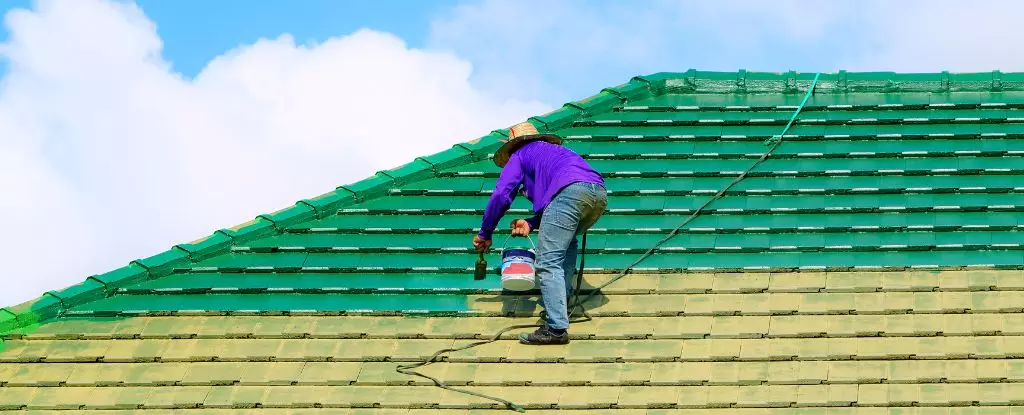In a major breakthrough, scientists at Stanford University have developed a revolutionary new paint that has the potential to significantly reduce our dependence on air conditioning and heating systems. This game-changing innovation comes in a range of vibrant colors and, when used correctly, has the power to slash both electricity bills and harmful emissions. Unlike ordinary colored paints, this extraordinary paint is capable of reflecting up to 80 percent of mid-infrared light from the Sun, making it ten times more effective in reducing heat absorption.
One of the most remarkable characteristics of this paint is its versatility. By applying it to the exterior of a building, it acts as a barrier that keeps heat out. Conversely, when used on the interior, it helps to retain heat. This makes it a remarkable year-round energy-saving solution that can be applied in various climates. In fact, when tested in simulated warm conditions, the paint reduced the energy required to cool the space by an impressive 21 percent. Similarly, in simulated cold conditions, it reduced the energy required to heat the space by a remarkable 36 percent.
The potential impact of this innovative paint on reducing energy consumption is truly significant. Researchers estimate that, across an entire building, it could save up to 7.4 percent of the energy required for heating, ventilation, and cooling in a mid-rise apartment building. This is particularly noteworthy considering that buildings in the United States alone account for approximately 40 percent of the nation’s total energy consumption. Moreover, a significant portion of this energy usage is attributed to heating, ventilation, and air conditioning – making the contribution of this revolutionary paint all the more crucial.
As our planet undergoes the adverse effects of climate change, extreme temperatures are becoming more frequent and severe worldwide. In many instances, air conditioners have become the primary means of combating the heat. However, while they undeniably ensure the preservation of lives, these devices are neither cost-effective nor eco-friendly. They are major contributors to carbon emissions and air pollution, thereby endangering lives even further. Consequently, energy-efficient solutions, such as this groundbreaking paint, are urgently needed for the preservation of our planet and the well-being of future generations.
What sets this paint apart from other reflective coatings is its remarkable color range. Unlike traditional paints that are either white or silver, this innovative paint comes in a vibrant array of colors, including blue, red, yellow, green, orange, purple, and dark gray. This is made possible by the paint’s unique double-layer design. The lower layer is a reflective surface containing silver aluminum flakes, while the upper layer is an infrared transparent coating infused with colorful inorganic nanoparticles. While similar double-layer designs have been used in the past to reflect specific wavelengths of infrared light, this approach stands out due to its exceptional effectiveness.
The versatility of this paint cannot be overstated. It adheres to diverse surfaces, regardless of their shape or material composition, making it a remarkably practical solution for a wide range of scenarios. When applied to the exterior of a building, the top layer of paint allows infrared light from the Sun to pass through while bouncing off the mirror-like bottom layer. Consequently, heat from the Sun is prevented from being absorbed by the building, resulting in a significantly cooler interior. Furthermore, both layers of the paint are water-repellent, making them ideally suited for use in hot and humid environments.
Yi Cui, a materials scientist at Stanford University, stresses the significance of reducing energy consumption and emissions on a global scale to achieve zero-emissions goals. The demand for new materials that enhance insulation and minimize heat exchange between living and working spaces and the surrounding environment is steadily increasing. As such, the Stanford research team is committed to continually refining and advancing their technology. With the ultimate goal of commercializing this remarkable paint, they have the potential to transform the energy efficiency of buildings worldwide.


Leave a Reply